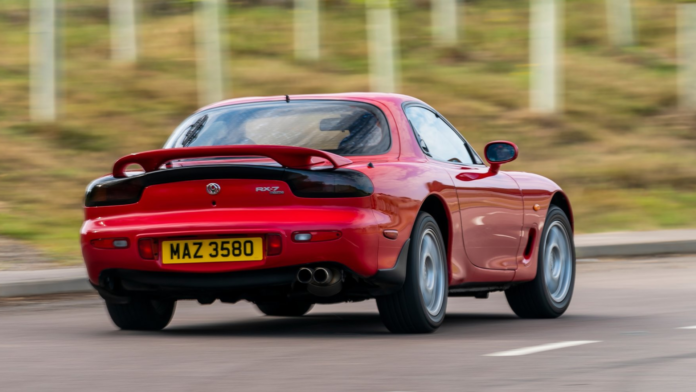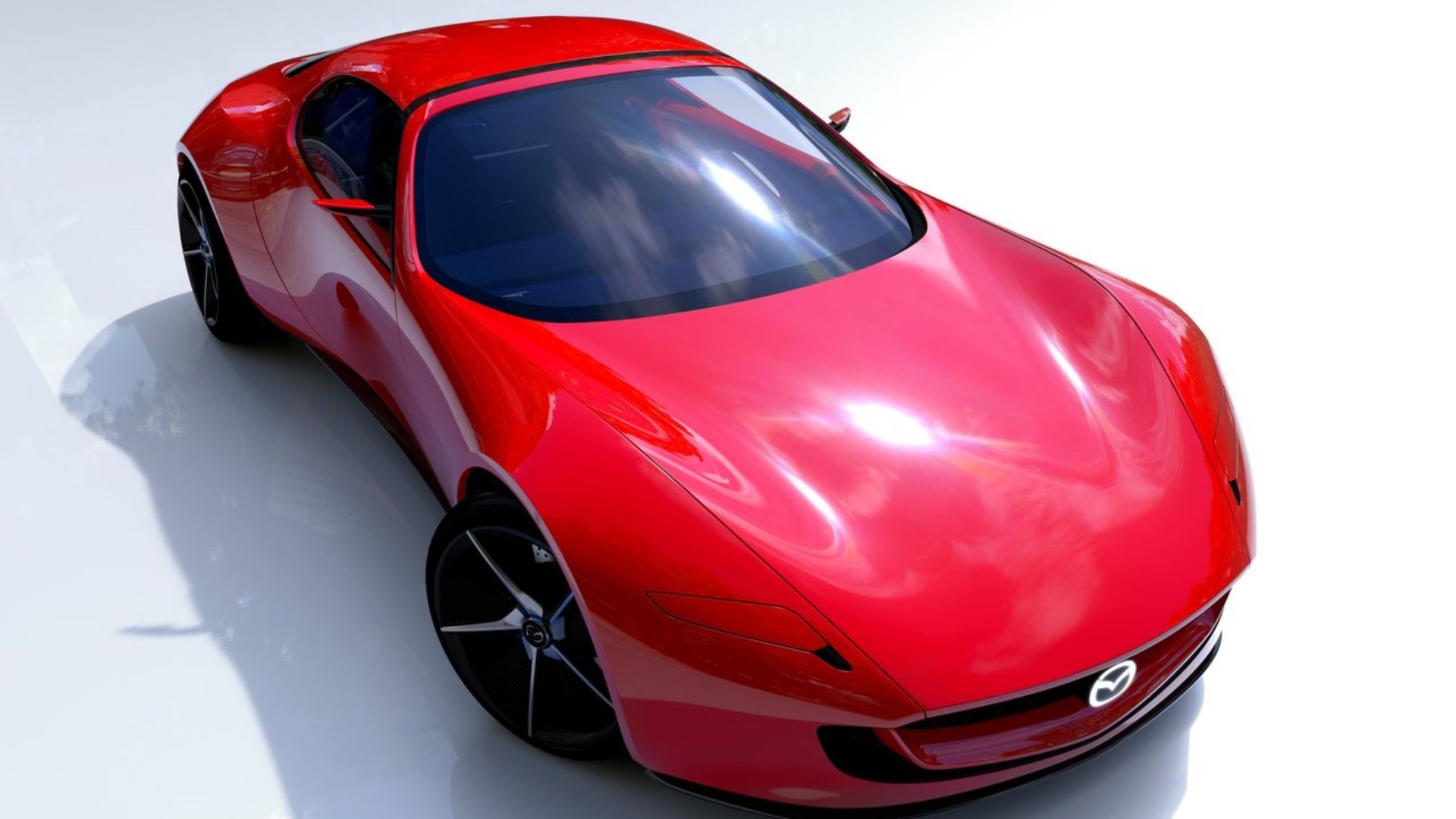For decades, the supercar has typically been heralded as the best of the best in the automotive industry. Speed, looks, handling, and a big price tag are typically the supercar’s forte, and a few automakers stand out when it comes to creating these wonders of the gearhead’s world. Few of us will ever experience the thrill of driving one, and even fewer will actually be fortunate enough to own one. But, it doesn’t have to be like that, at least not completely. We can say that, because there’s at least one car packing supercar-level power. Power density, that is.
The car in question is the Mazda RX-7, specifically, the final iteration of the iconic nameplate, the FD-gen Series 8. It was manufactured from 1998 to 2002, and was only offered in the Japanese market. Enthusiasts from all over the world have fallen in love with the iconic sports car as a whole at some point in their lives, and you can see why. Below, we’ll explain just how the RX-7’s power-density rivals that of some supercars, and we’ll see what else the RX-7 had, and still has, to offer.
The following information regarding the Mazda RX-7 and its capabilities was taken from Mazda.com. Information pertaining to the Wankel engine was also taken from Mazda.com.
The Mazda RX-7 Still Deserves Your Attention
Mazda RX-7 FD Key Points
- Sports a power density of 212.3 horsepower per liter.
- The final four years of production marked the FD’s “Series 8” iteration.
- Utilized the coveted 13B-REW Wankel engine.
The RX-7 we’re discussing today’s story began in 1992, when Mazda revamped the model entirely, moving away from the smaller, boxier design into a much more streamlined and curved style. This style can still, arguably, keep up with the times, even today. Apart from the pop-up headlights, which are cool in their own right, the RX-7’s design could still captivate on a showroom floor, even though it’s a bit more rounded off than most new cars today. Reason number one why the FD still deserves your attention.
Mazda’s FD RX-7 packs plenty of power, too. As most are aware, the RX-7 sports a Wankel engine, a type of rotary engine used by Mazda for decades. It’s a 1.3-liter, and sports 276 horsepower thanks to a pair of sequential turbochargers and precise engineering. In a car that only weighs as little as 2,685 pounds, that’s quite a lot of power. In fact, its power-to-weight ratio is just under 205.6 horsepower per ton, more than the hot 2022 Toyota GR Corolla, which measures 203.3 horsepower per ton. Reason number two why the FD still deserves your attention.
The FD RX-7 is quite the track-muncher, as well. One of the largest reasons for this is its near-perfect 50/50 weight distribution. This means the RX-7 weighs basically the same at its front and rear, and a perfect weight distribution translates to great handling. It also sports a fully-independent suspension setup on both its front and rear axles, and a widely reported “sensitive” steering feel which is attributed to the 13B-REW’s lightweight profile. Reason number three why the FD still deserves your attention.
It’s safe to say the FD RX-7 still cuts it these days. Because of these facts, it’s no surprise the Series 8 FD’s average sale price is well over $40,000 in today’s auction market, with several examples going for much, much more than that.
Oh, and it was sold with a manual gearbox, which is exceedingly rare these days.
A Few Supercars With Less Power Density Than The RX-7
There are more, but we’re going to focus on four supercars the Series 8 RX-7 beats, when it comes to power density with its 212.5 horsepower per liter. Yes, even a Lamborghini is trounced by the humble, 22-year-old Mazda.
2024 Lamborghini Huracán: 121.3 Horsepower Per Liter
It’s surprising to see, but the Huracan is demolished when it comes to power density by the Series 8 RX-7. The Huracan employs a 5.2-liter, naturally-aspirated Audi-bred V10 engine. Despite the 5.2-liter V10’s notoriety and wide-reaching use in the supercar community, it has been discontinued. The all-new Temerario uses a hybrid V8 engine delivering 907 horsepower.
2024 Porsche 718 Cayman GT4 RS: 123.25 Horsepower Per Liter
Porsche’s 718 range is, arguably, overshadowed by its big brother, the 911. However, that doesn’t mean the 718 isn’t capable of some impressive power. The hottest 718, the GT4 RS, uses the same 4.0-liter flat-six found in the 911 GT3 RS, albeit de-tuned a bit to make 493 horsepower. The GT4 RS sports some unique aerodynamic upgrades, and is positioned as the most track-ready 718 on the market.
2024 Porsche 911 GT3 RS: 129.5 Horsepower Per Liter
Next on our short list of cars beaten by the Mazda is the newest Porsche 911 GT3 RS, the hottest of the hot in the 911 lineup. It’s a hardcore, track-ready version of the 911, even harder-core than the 911 GT3. To make the GT3 RS more potent than the regular GT3, it features some aerodynamic upgrades and more weight-shedding. It also packs a 4.0-liter, naturally-aspirated flat-six engine sporting 518 horsepower, 16 more than the normal GT3.
2024 Mercedes-AMG GT 63 PRO 4MATIC+: 150.75 Horsepower Per Liter
The Mercedes-AMG GT 63 PRO 4MATIC+, like most of the current Mercedes-Benz lineup, is a mouthful to sound out. But, it’s a quick little coupe, sporting a 4.0-liter, twin-turbo V8 pushing 603 horsepower and 627 lb-ft of torque. The “PRO” in its name denotes its place as the more powerful version of the GT 63, which typically only produces 577 horsepower.
This Wankel Is In A League Of Its Own
|
2002 Mazda RX-7 (FD) Specs |
|
|---|---|
|
Displacement |
1.3-Liter Twin-Sequential Turbocharged Wankel Rotary Engine |
|
Horsepower |
276 hp @ 6,500 rpm |
|
Torque |
232 lb-ft @ 5,000 rpm |
|
0-60 MPH |
4.8 Seconds |
|
Top Speed |
156 mph (Governed) |
|
Rev Limit |
8,300 rpm |
The reason for the RX-7’s supercar-beating power density lies just underneath its hood, the 13B-REW Wankel rotary engine. Wankel’s get strongly mixed opinions in the automotive community for a few reasons we’ll discuss below. The fact of the matter is, at least in the 13B-REW’s case, it churned out quite a lot of oomph for its puny 1.3 liters.
First, let’s talk about how the little Wankel makes all that power. As we touched on earlier, the 13B-REW’s final iteration seen in the Series 8 RX-7 throws out 276 horsepower, and this is largely thanks to its pair of sequential turbochargers. Sequential turbocharging is one of the best ways for an engine to avoid dreaded turbo lag. The reason for this is thanks to the nature of sequential turbocharging. In essence, one turbocharger takes care of the first bit of the rev range, and another kicks in for the top-end. Sequential boosting also makes for a broader power band, an important aspect of any car tasked with going quickly.
The 13B-REW features some other unique aspects, as well. It’s a twin-rotor engine, as all members of the 13B Wankel engine family were. The 13B-REW featured thicker-than-usual rotors, measuring 3.1 inches in thickness, an improvement over the engine which the 13B was based on, the earlier 12A Wankel. Despite reinforced rotors, the 13B-REW only weighed just 327 pounds, and that’s when fully dressed. For context, being fully dressed refers to an engine with all accessories bolted on, and it just needs fluids like engine oil and coolant topped off.
Handling the 13B-REW’s immense-for-its-size power was either a five-speed manual or a four-speed automatic. I’m sure you can guess which transmission we’d prefer. The FD RX-7 utilizes a front-engine, rear-wheel drive layout, as well.

Add CarBuzz to your Google News feed.
Will We See Another Wankel-Powered Mazda Sports Car?
Most signs point to yes, if Mazda’s claims are to be believed, that is. Currently, the Japanese automaker is working on a next-gen Wankel-powered sports car called the Iconic SP. It’s still in the concept phase, but Mazda has released some info on the thing. It’s supposedly going to be a twin-rotor rotary engine that can burn various fuels such as hydrogen, and can also generate electricity to help power itself.
We’re unsure of its release date, or if it will be released at all. But, the fact that Mazda is working on another rotary-engine sports car is good news. If the Iconic SP proves good enough, it may even be a worthy successor to the Mazda RX-line.


